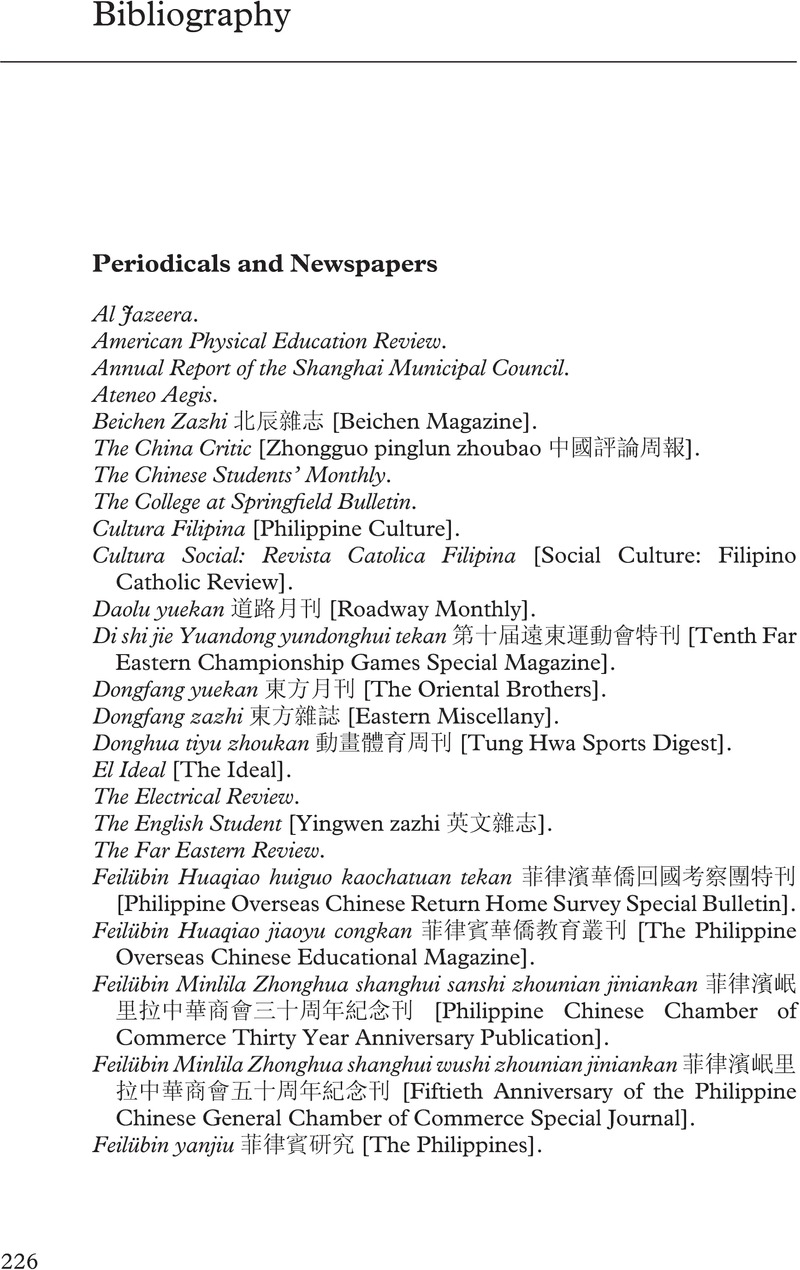Book contents
- China and the Philippines
- Asian Connections
- China and the Philippines
- Copyright page
- Dedication
- Contents
- Figures
- Acknowledgments
- A Note on Translation and Rendering of Names
- A Note on What Is Missing
- Introduction: Before a Vast Ocean
- Part I Mirrored Diasporas
- Part II The Philippine Model
- Part III Nationalisms of the Founders
- Part IV The Pivot
- Appendix: Glossary of Names
- Bibliography
- Index
- References
Bibliography
Published online by Cambridge University Press: 09 November 2023
- China and the Philippines
- Asian Connections
- China and the Philippines
- Copyright page
- Dedication
- Contents
- Figures
- Acknowledgments
- A Note on Translation and Rendering of Names
- A Note on What Is Missing
- Introduction: Before a Vast Ocean
- Part I Mirrored Diasporas
- Part II The Philippine Model
- Part III Nationalisms of the Founders
- Part IV The Pivot
- Appendix: Glossary of Names
- Bibliography
- Index
- References
Summary

- Type
- Chapter
- Information
- China and the PhilippinesA Connected History, c. 1900–50, pp. 226 - 270Publisher: Cambridge University PressPrint publication year: 2023

